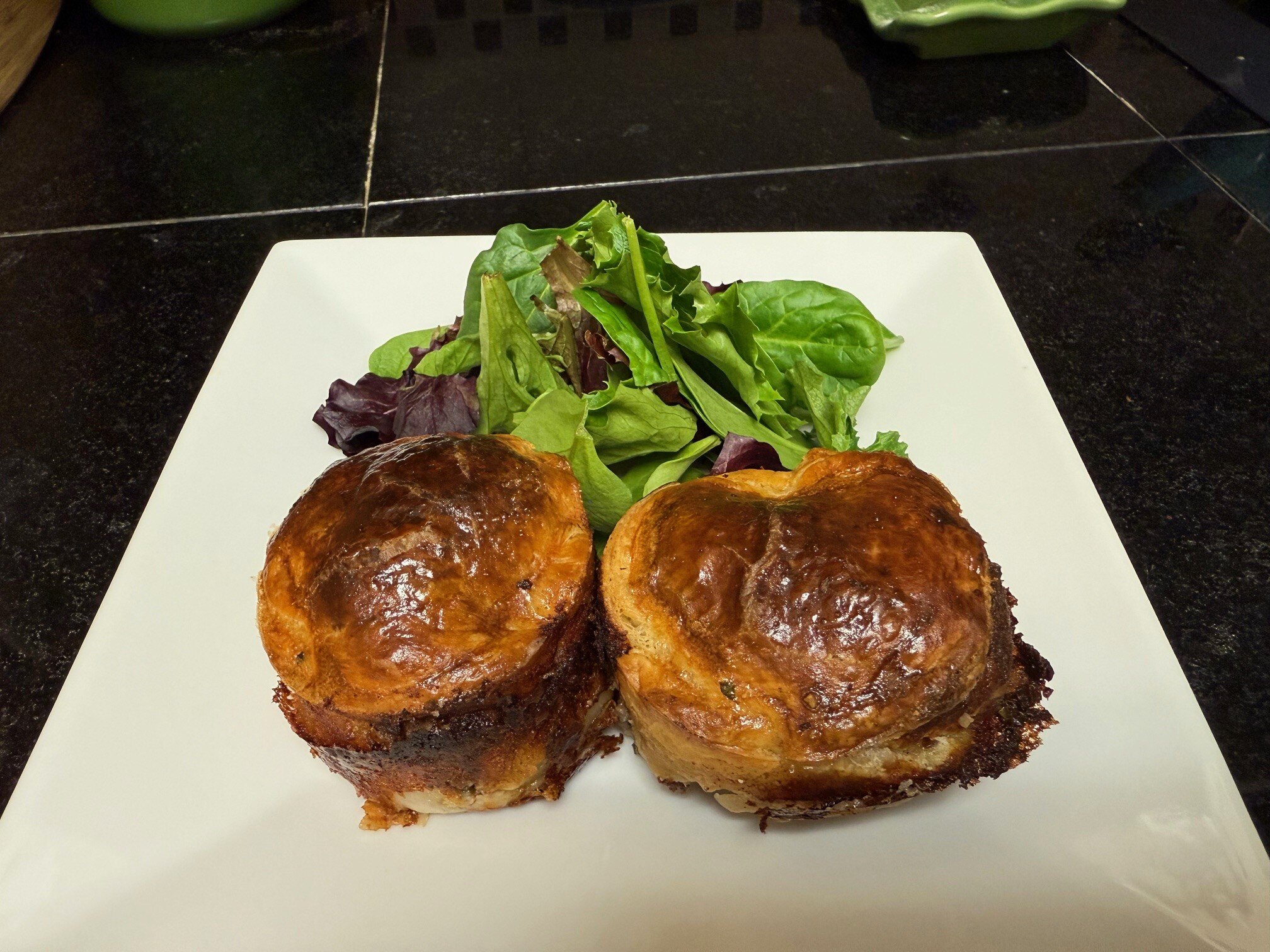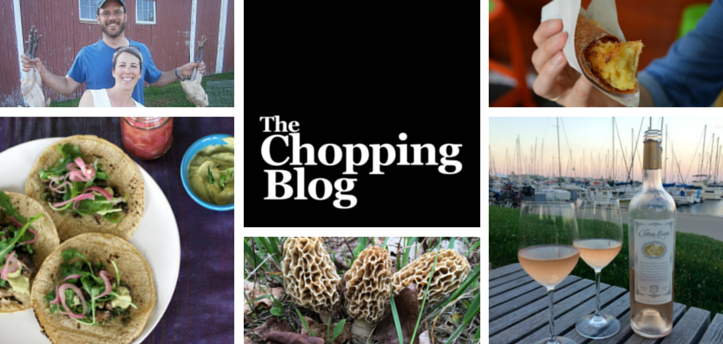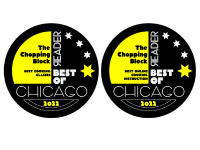New Zealand is a land of breathtaking landscapes, but its culinary scene is just as remarkable. From fresh seafood and world-class lamb to the legendary meat pies and Māori hāngī (traditional New Zealand Māori method of cooking food using an underground earth oven), the country offers a unique blend of flavors that reflect its rich cultural heritage and pristine environment. And then there’s the wine! Whether it’s a crisp Marlborough Sauvignon Blanc or a velvety Central Otago Pinot Noir, New Zealand’s vineyards produce some of the finest wines in the world.
 I am lucky enough to have family that has lived in New Zealand for about twenty years. I visited my brother and his family when they first moved there, and I finally just recently returned. A lot has changed since I first traveled across the world, including the fact that I now have a smart phone to document my journey (not so on the first trip). I do remember that the locals drank American Budweiser beer and the food was mostly British influenced, with sweetened sauces (like ketchup) and pickles, none of which I care for.
I am lucky enough to have family that has lived in New Zealand for about twenty years. I visited my brother and his family when they first moved there, and I finally just recently returned. A lot has changed since I first traveled across the world, including the fact that I now have a smart phone to document my journey (not so on the first trip). I do remember that the locals drank American Budweiser beer and the food was mostly British influenced, with sweetened sauces (like ketchup) and pickles, none of which I care for.
Fast forward 18 years, and I had a blast exploring the best of New Zealand’s food and wine, uncovering hidden gems, local favorites, and must-try experiences I want to share with you.
Exploring Aotearoa: Māori Legends, Red Rocks, and a Taste of Pāua
Aotearoa is the Māori name for New Zealand, and today, many New Zealanders (both Māori and non-Māori) use both names together, Aotearoa New Zealand, as a way to honor the country’s indigenous heritage. I did as much hiking as possible on this trip and researched the Māori significance of the places I visited.
When I explored the rugged south coast of Wellington by walking from Owhiro Bay to the Red Rocks, an area of national significance with fascinating geology, I was looking for fur seals but I saw more red rocks that were formed 200 million years ago. Māori folklore tells two stories relating to the color of the rocks. In one, Kupe - the famous Polynesian explorer - was gathering pāua (shellfish) here when one clamped his hand. He bled and stained the rocks red. In the other story, the red is the blood of Kupe's daughters. Fearing for their father's safety on a long voyage, they gashed themselves in grief over his absence.
 Pāua is the New Zealand variety of abalone and their shells are stunningly beautiful due to their unique iridescent colors, natural patterns, and mineral composition. They are often used in jewelry and art.
Pāua is the New Zealand variety of abalone and their shells are stunningly beautiful due to their unique iridescent colors, natural patterns, and mineral composition. They are often used in jewelry and art.
 Pāua is typically served as a fritter so of course, I had to seek one out at a popular local restaurant on Shelly Bay in Wellington called Chocolate Fish. They serve pāua patties made simply with egg, onion, flour & parsley on a piece of white bread with some fresh greens and drizzled with aioli. I was expecting a deep fried fritter like a conch fritter but this was light and airy. It wasn't my favorite dish of the trip but it was a bucket list item that needed to be checked!
Pāua is typically served as a fritter so of course, I had to seek one out at a popular local restaurant on Shelly Bay in Wellington called Chocolate Fish. They serve pāua patties made simply with egg, onion, flour & parsley on a piece of white bread with some fresh greens and drizzled with aioli. I was expecting a deep fried fritter like a conch fritter but this was light and airy. It wasn't my favorite dish of the trip but it was a bucket list item that needed to be checked!

Seafood: An Essential Part of New Zealand's Identity
Seafood is incredibly important in New Zealand due to its abundant coastline, rich Māori heritage, and thriving seafood industry.
New Zealand is an island nation with over 9,300 miles of coastline, one of the longest in the world relative to land size. Surrounded by water, it has access to a diverse range of seafood, including green-lipped mussels, crayfish (rock lobster), pāua, snapper, hoki, and bluff oysters.
Seafood has been a staple of the Māori diet for centuries. They have developed sustainable fishing techniques and hold deep spiritual and cultural connections to the ocean. At the same time, New Zealand is a major exporter of seafood, supplying fresh and frozen fish, mussels, and shellfish to markets worldwide.
In addition to pāua, whitebait is a local specialty. These are young, transparent, tiny fish which are prized for their delicate flavor and light texture. They are typically battered and fried in a light, fluffy fritter, often enjoyed with a squeeze of lemon on a piece of bread. I'll be honest, this picture at this food stall along the Wellington waterfront didn't really do it for me, so I passed on a whitebait fritter afternoon snack.
 We visited Kaikōura on the south island in search of fur seals, which we kayaked right by, as we were educated on this species by our local guide. The area is best known for whale watching in the winter months (remember that New Zealand is in the Southern Hemisphere so it was summer when I went last month!).
We visited Kaikōura on the south island in search of fur seals, which we kayaked right by, as we were educated on this species by our local guide. The area is best known for whale watching in the winter months (remember that New Zealand is in the Southern Hemisphere so it was summer when I went last month!).
 The name of the town, Kaikōura, means "eat crayfish" (kai = food/eat, kōura = crayfish) in Māori. Typically, when I hear someone say "crayfish" I think it's someone who doesn't know that it's called "crawfish" down South. But crayfish means rock lobster to New Zealanders. Every restaurant in town had it on the menu for market price. But after my market price ordering debacle in Alaska, I knew to ask before ordering. Since one crayfish costs between $80-$100, I decided to pass. I thoroughly enjoyed all of the clever advertising though!
The name of the town, Kaikōura, means "eat crayfish" (kai = food/eat, kōura = crayfish) in Māori. Typically, when I hear someone say "crayfish" I think it's someone who doesn't know that it's called "crawfish" down South. But crayfish means rock lobster to New Zealanders. Every restaurant in town had it on the menu for market price. But after my market price ordering debacle in Alaska, I knew to ask before ordering. Since one crayfish costs between $80-$100, I decided to pass. I thoroughly enjoyed all of the clever advertising though!
 Instead, I opted for another New Zealand seafood staple for dinner: green-lipped mussels with a Marlborough Sauvignon Blanc for dinner at Strawberry Tree Kaikōura. These were served in a cream chili broth with lots of bread to sop up that yummy sauce!
Instead, I opted for another New Zealand seafood staple for dinner: green-lipped mussels with a Marlborough Sauvignon Blanc for dinner at Strawberry Tree Kaikōura. These were served in a cream chili broth with lots of bread to sop up that yummy sauce!

Green-lipped mussels are a unique species of mussels native to New Zealand. They are named for the distinctive green edges (or "lips") on their shells and are highly valued for their nutritional benefits, sustainability, and delicious taste. They are much larger than the mussels we get in America, and they are plumb, sweet and tender. They are commonly served steamed, grilled, in chowders or simply with garlic butter. You can find them alive in bins in local grocery stores.
 No trip to New Zealand would be complete without at least one meal of fish and chips so I checked that box at another pub in Kaikoura, The Whaler.
No trip to New Zealand would be complete without at least one meal of fish and chips so I checked that box at another pub in Kaikoura, The Whaler.
But What about the Kiwis?
You've likely heard New Zealanders referred to as Kiwis before, but you may not know that it's because of the kiwi bird, which has been part of Māori culture for centuries.
New Zealand soldiers in World War I were "Kiwis" due to the bird being a well-known national symbol. The name stuck, and by World War II, "Kiwi" was commonly used to refer to all New Zealanders. They are proud of that nickname because it demonstrates a strong connection to nature and everyone loves the small, flightless bird that is native to New Zealand!
Since the bird is nocturnal, I didn't get to see one in person, but I hear you might catch a glimpse of one if you take the nighttime tour at Zealandia Te Māra a Tāne, the world’s first fully-fenced urban ecosanctuary. So, that's on the list for my next visit!

Why New Zealand Lamb Stands Out
New Zealand lamb is considered some of the best in the world due to its high quality, natural farming methods, and exceptional flavor. New Zealand lamb is raised free-range on lush, rolling pastures, feeding almost entirely on natural grass and clover. This results in leaner, more tender, and flavorful meat compared to grain-fed lamb from other countries. New Zealand’s mild climate and pristine landscapes allow for year-round grazing.
 And if you think you don't like lamb because it's too gamey, I highly recommend trying New Zealand lamb. It has a mild, slightly sweet flavor with less gamey taste than other lamb varieties. It remains juicy and tender when cooked properly. It pairs beautifully with New Zealand wines, especially a Central Otago Pinot Noir. I enjoyed both (with some chimichurri sauce) at a beautiful open-kitchen restaurant called Charley Noble in Wellington.
And if you think you don't like lamb because it's too gamey, I highly recommend trying New Zealand lamb. It has a mild, slightly sweet flavor with less gamey taste than other lamb varieties. It remains juicy and tender when cooked properly. It pairs beautifully with New Zealand wines, especially a Central Otago Pinot Noir. I enjoyed both (with some chimichurri sauce) at a beautiful open-kitchen restaurant called Charley Noble in Wellington.
 This was my nicest dinner of the trip, though we had some interesting snacks as we waited in Picton to catch the ferry from the South Island back to the North Island. I had never had tempura cabbage leaves before and now, I want to recreate them at home. They were so light and crispy!
This was my nicest dinner of the trip, though we had some interesting snacks as we waited in Picton to catch the ferry from the South Island back to the North Island. I had never had tempura cabbage leaves before and now, I want to recreate them at home. They were so light and crispy!
Sweets of New Zealand
New Zealand has some unusual desserts. One of the most iconic that you are likely familiar with is Pavlova, a meringue-based dessert with a crisp crust and soft, marshmallow-like inside. It's traditionally topped with whipped cream and fresh fruit like berries. Both New Zealand and Australia claim to have invented this dessert, though the Kiwis firmly believe it's theirs. You can learn how to make a mini version in Chef Sara's blog.
 Another classic Kiwi sweet flavor is Hokey Pokey, with crunchy honeycomb toffee pieces. You'll find this flavor in ice cream, but my preferred favorite is in a Whittaker's chocolate bar. This chocolate is seriously the best chocolate I've ever tasted, including the chocolate I tasted in Spain and Italy. It's a household name in New Zealand, but remains a family business which makes premium chocolate in an artisan way.
Another classic Kiwi sweet flavor is Hokey Pokey, with crunchy honeycomb toffee pieces. You'll find this flavor in ice cream, but my preferred favorite is in a Whittaker's chocolate bar. This chocolate is seriously the best chocolate I've ever tasted, including the chocolate I tasted in Spain and Italy. It's a household name in New Zealand, but remains a family business which makes premium chocolate in an artisan way.
 Squiggles are another sweet treat uniquely Kiwi due to that same Hokey Pokey flavor. I'll admit I had more than a couple of these cookies!
Squiggles are another sweet treat uniquely Kiwi due to that same Hokey Pokey flavor. I'll admit I had more than a couple of these cookies!
 When we had dinner at my brother's friend's house, the hosts brought out two different Kiwi ice creams for me to try.
When we had dinner at my brother's friend's house, the hosts brought out two different Kiwi ice creams for me to try.
 The Jelly Tip wasn't my favorite, but the passionfruit ice cream bar reminded me of the tropical desserts I had in Hawai'i last fall. It's so good with that Kamahi honey, which is a unique and rare variety of honey produced in New Zealand, specifically from the nectar of the Kamahi tree.
The Jelly Tip wasn't my favorite, but the passionfruit ice cream bar reminded me of the tropical desserts I had in Hawai'i last fall. It's so good with that Kamahi honey, which is a unique and rare variety of honey produced in New Zealand, specifically from the nectar of the Kamahi tree.
My sister-in-law picked up a Lamington cake for me to try. Lamingtons are typically sponge cakes dipped in chocolate and then rolled in coconut, but the pink version adds a fun and colorful twist to this classic treat.

Instead of chocolate, pink Lamingtons are coated with a pink-colored icing and then rolled in the coconut. It offers a fruitier, lighter flavor, plus it's pretty! Like the Pavlova, the New Zealanders and Australians both claim to be the creators of this dessert.
Pies Win Out
Another New Zealand staple is hand pies. These can be found at bakeries, groceries stories, dairies (a small, owner-operated convenience store that sells groceries, milk, dairy products, and other essentials), and even petrol (gas) stations. Flavors seem to have no limit from bacon and eggs to butter chicken, smoked fish and my favorite - mince and cheese (ground beef and cheese).
I had a really hard time trying to decide what recipe I wanted to recreate for this post to represent New Zealand food. I initially was going to do the pink Lamington cake but decided to focus on the pies of New Zealand. Every bookstore I went into on the trip had a pie cookbook featuring local pies.
I tasted two from a local dairy in Strathmore, a suburb of Wellington where my family lives.
 One was filled with mince meat and the other cubed steak.
One was filled with mince meat and the other cubed steak.
I sampled both and thought they were very good. Little did I know that the Strathmore Bakery and Cafe were the winners of the Regional News People's Choice Award for Best Pie in 2024! I found this out after I got home, but my sister-in-law was validated in her choice of pies for my tasting.

Owners of Strathmore Bakery and Cafe
This recipe replicates those pies in an individual-sized portion. Using store-bought puff pastry makes it easy! You just need to plan ahead because the filling works best if it is chilled overnight, but it needs at least an hour in the fridge.
New Zealand-Style Mince Pies
Adapted from Food52
Yields: 12 individual pies
Prep time: 30 minutes
Cook time: 45 minutes
Inactive time: 2 hours, 45 minutes
Total time: 4 hours
1 Tablespoon extra-virgin olive oil
1 small onion, finely diced
1 clove garlic, minced
1 pound lean ground beef
1/2 teaspoon salt
3 Tablespoons flour
1 1/2 cups beef stock
1 teaspoon Worcestershire sauce
1/2 cup parsley
3/4 cup aged white cheddar cheese, finely diced (use a block of cheese rather than shredded)
1 package puff-pastry, thawed in the fridge
1 egg
1. Heat oil in a large sauté pan over medium heat. Add onion, cook until translucent and soft, about 2-3 minutes. Add garlic, cook 1 minute. Add ground beef and cook, breaking up with a wooden spoon, until no pink remains, about 5-6 minutes.


2. Stir in salt and a few cracks of black pepper. Sprinkle flour over beef and cook, 1 minute. Pour in beef stock and Worcestershire sauce. Bring to a boil, scraping all the brown bits (i.e. fond) off the bottom of the pan. Reduce heat to medium-low and simmer until the stock has reduced and thickened, about 6-8 minutes.

 3. Move beef mixture into a bowl and let cool to room temperature. Cover and refrigerate until completely chilled, at least 1-2 hours or preferably, overnight.
3. Move beef mixture into a bowl and let cool to room temperature. Cover and refrigerate until completely chilled, at least 1-2 hours or preferably, overnight.
 4. Remove puff pastry from fridge. Roll sheets to 1/8-inch thickness on floured surface. Using a 3.5-inch or 4-inch biscuit or cookie cutter (or even a jar of that size), cut puff pastry into 24 rounds. Place onto a parchment-lined baking sheet and let chill in the fridge for 30 minutes.
4. Remove puff pastry from fridge. Roll sheets to 1/8-inch thickness on floured surface. Using a 3.5-inch or 4-inch biscuit or cookie cutter (or even a jar of that size), cut puff pastry into 24 rounds. Place onto a parchment-lined baking sheet and let chill in the fridge for 30 minutes.



5. Remove the chilled beef mixture from the fridge. Chop the parsley. Stir the parsley and diced cheese into the filling.
 6. Lightly grease a 12-cup muffin tin.
6. Lightly grease a 12-cup muffin tin.
 7. Place a puff pastry round in the base of each muffin tin, pressing along the sides so they are flush with the bottom and sides of the tin. You'll need to stretch the dough a little if you used a smaller cutter.
7. Place a puff pastry round in the base of each muffin tin, pressing along the sides so they are flush with the bottom and sides of the tin. You'll need to stretch the dough a little if you used a smaller cutter.
8. Evenly divide filling between each pie using a portion scoop, filling to the top.
 9. Whisk the egg in a bowl. Brush the edges of the pastry with the egg mixture and top with pastry rounds. Press around the edges of the pies to seal. Use the remaining egg to brush the tops of each pie. Place the tray in the freezer to chill for 15 minutes before baking.
9. Whisk the egg in a bowl. Brush the edges of the pastry with the egg mixture and top with pastry rounds. Press around the edges of the pies to seal. Use the remaining egg to brush the tops of each pie. Place the tray in the freezer to chill for 15 minutes before baking.

10. While the pies are chilling, preheat the oven to 425° F. Bake pies for 20-25 minutes, until golden brown. Use a sheet pan underneath the muffin tin in case you have some exploding pies. Let cool 10 minutes before serving.
 11. Serve with a salad. Two make a meal, or you can serve one per person as an appetizer.
11. Serve with a salad. Two make a meal, or you can serve one per person as an appetizer.

These pies freeze very well so you can just reheat them whenever you want to revisit New Zealand.
One thing I'd like to point out is that these mince pies made with minced (i.e. ground) meat are obviously quite different from fruit mince pies which you will also find in local grocery stores and bakeries. Fruit mince pies are made from a mixture of dried fruits like currants and raisins, spices, sugar and sometimes alcohol like brandy or rum. These pies or tarts are served typically around the Christmas season but they were still available while I was there.

A Journey through World-Class Vines
I cannot end without sharing my thoughts on all of the wine I tasted on this trip to New Zealand. I arrived in the country already knowing that New Zealand Sauvignon Blanc is my favorite white and New Zealand Pinot Noir ranks pretty high on my favorite red list. I'm happy to say all of my tastings confirmed those beliefs!

New Zealand’s unique climate, diverse terroirs, and commitment to sustainable practices have made it a top destination for wine enthusiasts. The country's wine regions are spread out across both the North Island and South Island, each with its own climate and soil types, which contribute to the distinct characteristics of their wines.
 Here are the two regions we visited:
Here are the two regions we visited:
Marlborough (South Island)
- The largest and most famous wine region, especially known for its Sauvignon Blanc. The cool climate and long sunshine hours produce aromatic, crisp, and vibrant wines with tropical fruit flavors and herbaceous notes.
- Marlborough is also gaining recognition for its Pinot Noir and Chardonnay.
Martinborough (North Island)
- This small but renowned region is especially recognized for its Pinot Noir, producing wines that are elegant, delicate, and complex. I also tasted some delicious rosé wine there.
In Marlborough, we visited Cloudy Bay winery where my sister-in-law did a tasting with me. We tasted their:
- Pelorus Non-Vintage (Sparkling)
- Sauvignon Blanc 2024
- Chardonnay 2022
- Pinot Noir 2022
 This was the most beautiful vineyard I've ever been to (including those in Spain, Italy, Greece, and California). Not only were the vines perfectly pristine with plump green grapes and lush leaves, the setting was something out of a magazine. The weather was perfect with a light breeze, and my family and I enjoyed a glass of wine in the shade surrounded by the vines.
This was the most beautiful vineyard I've ever been to (including those in Spain, Italy, Greece, and California). Not only were the vines perfectly pristine with plump green grapes and lush leaves, the setting was something out of a magazine. The weather was perfect with a light breeze, and my family and I enjoyed a glass of wine in the shade surrounded by the vines.
 More than a few Instagrammable moments are captured here!
More than a few Instagrammable moments are captured here!
 For our second weekend trip, we drove to Martinborough on the North Island, where most people choose to bike between vineyards because they are so close. I was lucky enough to be carted around in a rickshaw by my brother and sister-in-law because driving on the left side of the road (and steering a rickshaw with two people in it) turned out not to be a talent of mine!
For our second weekend trip, we drove to Martinborough on the North Island, where most people choose to bike between vineyards because they are so close. I was lucky enough to be carted around in a rickshaw by my brother and sister-in-law because driving on the left side of the road (and steering a rickshaw with two people in it) turned out not to be a talent of mine!

Me and my nephew, Patrick in Martinborough
We visited four different vineyards, a gin distillery and a brewery to wrap up the day. Just like in Marlborough, I saw the greenest and healthiest vines I've ever seen.
 I knew when I saw this artwork in our Airbnb, I was in my happy place!
I knew when I saw this artwork in our Airbnb, I was in my happy place!
 We also visited the Olivo, Martinborough's first commercial and oldest olive grove in the Wairarapa. It has grown to 1200 olive trees and now produces award-winning olive oil. It was so good that I brought back a few bottles for family and friends!
We also visited the Olivo, Martinborough's first commercial and oldest olive grove in the Wairarapa. It has grown to 1200 olive trees and now produces award-winning olive oil. It was so good that I brought back a few bottles for family and friends!

 New Zealand is a feast for both the eyes and the palate. From fresh seafood and world-class lamb to legendary pies and decadent sweets, every meal tells a story of the country’s rich cultural heritage and breathtaking landscapes. Pair that with some of the finest wines in the world, and it’s easy to see why this culinary adventure was unforgettable. Whether you’re hiking to historic sites, kayaking alongside seals, or indulging in a perfectly crafted mince pie, New Zealand offers an experience that lingers long after you return home. One thing is certain - I’ll be back for more!
New Zealand is a feast for both the eyes and the palate. From fresh seafood and world-class lamb to legendary pies and decadent sweets, every meal tells a story of the country’s rich cultural heritage and breathtaking landscapes. Pair that with some of the finest wines in the world, and it’s easy to see why this culinary adventure was unforgettable. Whether you’re hiking to historic sites, kayaking alongside seals, or indulging in a perfectly crafted mince pie, New Zealand offers an experience that lingers long after you return home. One thing is certain - I’ll be back for more!
While we don't currently have any cuisines from the (currently warm) Southern Hemisphere on our class calendar, we offer many other escapes from the Midwest winter. Here are just some of our upcoming hands-on classes that are on my radar:
- Secrets of Mexico Boot Camp Saturday, March 1 10am TOMORROW!
- Date Night: Taste of Thailand Saturday, March 1 6pm TOMORROW!
- Night in Spain Thursday, March 6 6pm
- Greek Islands Thursday, March 6 6pm
- Savoring Sicily Friday, March 7 6pm
- Spring Break: Baja California Friday, March 14 6pm

New Zealand Minced Meat & Cheddar Pies
Ingredients
- 1 Tablespoon extra-virgin olive oil
- 1 small onion, finely diced
- 1 clove garlic, minced
- 1 pound lean ground beef
- 1/2 teaspoon salt
- 3 Tablespoons flour
- 1 1/2 cups beef stock
- 1 teaspoon Worcestershire sauce
- 1/2 cup parsley
- 3/4 cup aged white cheddar cheese, finely diced (use a block of cheese rather than shredded)
- 1 package puff-pastry, thawed in the fridge
- 1 egg
Instructions
- Heat oil in a large sauté pan over medium heat. Add onion, cook until translucent and soft, about 2-3 minutes. Add garlic, cook 1 minute. Add ground beef and cook, breaking up with a wooden spoon, until no pink remains, about 5-6 minutes.
- Stir in salt and a few cracks of black pepper. Sprinkle flour over beef and cook, 1 minute. Pour in beef stock and Worcestershire sauce. Bring to a boil, scraping all the brown bits (i.e. fond) off the bottom of the pan. Reduce heat to medium-low and simmer until the stock has reduced and thickened, about 6-8 minutes.
- Move beef mixture into a bowl and let cool to room temperature. Cover and refrigerate until completely chilled, at least 1-2 hours or preferably, overnight.
- Remove puff pastry from fridge. Roll sheets to 1/8-inch thickness on floured surface. Using a 3.5-inch or 4-inch biscuit or cookie cutter (or even a jar of that size), cut puff pastry into 24 rounds. Place onto a parchment-lined baking sheet and let chill in the fridge for 30 minutes.
- Remove the chilled beef mixture from the fridge. Chop the parsley. Stir the parsley and diced cheese into the filling.
- Lightly grease a 12-cup muffin tin.
- Place a puff pastry round in the base of each muffin tin, pressing along the sides so they are flush with the bottom and sides of the tin. You'll need to stretch the dough a little if you used a smaller cutter.
- Evenly divide filling between each pie using a portion scoop, filling to the top.
- Whisk the egg in a bowl. Brush the edges of the pastry with the egg mixture and top with pastry rounds. Press around the edges of the pies to seal. Use the remaining egg to brush the tops of each pie. Place the tray in the freezer to chill for 15 minutes before baking.
- While the pies are chilling, preheat the oven to 425° F. Bake pies for 20-25 minutes, until golden brown. Use a sheet pan underneath the muffin tin in case you have some exploding pies. Let cool 10 minutes before serving.
- Serve with a salad.












